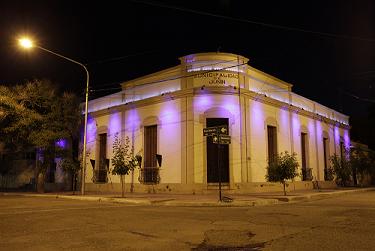The captain Pedro Moyano and Cornejo established his farm towards the east of what is today the Mendoza River, soon after the foundation of the City of Mendoza, in the middle of the XVI century, by Spaniards coming from Chile, under the control of the captain Juan Jofré de Loaysa and Montesa. This was because of the distribution of the land throughout the surrounding territory, from 1562 on.
It was known as “encomienda” the power that Spanish Kingdom granted to the settlers that administer the lands and let them use as they wished, the natives that lived there; name that by an extension was also applied to the place occupied for that matter.
The regions taken over by Pedro Moyano and Cornejo used to be called by the natives Tumbra and Uyata; which from that time on started to be known as Rodeos de Moyano, and they included what at the present are the departments of Junín and Rivadavia. According to chronicles of the time, the occupation of the territories was not so difficult because of the meekness of native Huarpes.
It was in 1721, when the captains Juan and Francisco de Corvalán and Castilla took possession of the Rodeos, where decades later would be created the head city of the department of Junín.
Junín was declared a department January 18 1859, and the Provincial Governor was the General Juan Cornelio Moyano. The respective decree determined that the department of San Martín would be divided in two. One part of it would maintain the same name and the other would receive the name of Junín, in memory of the battle fought by Simón Bolivar in the Plains of Junín (Alto Peru), against the Spaniards, the 6 of August of 1824.






